SOLD Ancient Catacomb Terracotta Oil Lamp, Roman Empire
$155.00Early Christianity oil lamps were also seen as a symbol of light and a manifestations of the presence of the divine.
Showing 325–336 of 430 results
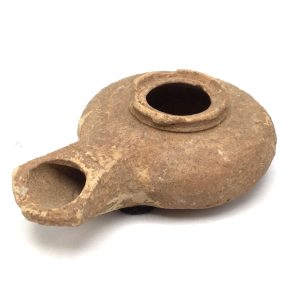

Early Christianity oil lamps were also seen as a symbol of light and a manifestations of the presence of the divine.
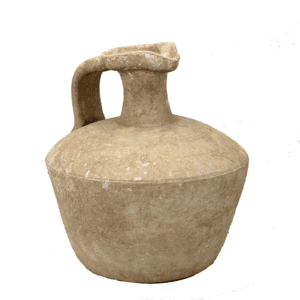
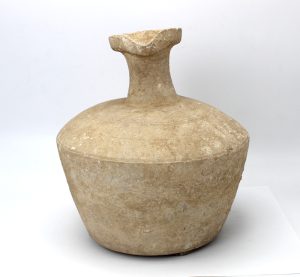
This Roman ceramic flagon is a uniquely shaped vessel used to store and pour potable liquids. A crème slip carinated jug with a high profile and a trefoil pouring spout, it has a strap handle attached from the carinated edge to just below the rim for easy handling. Roman coarse wars like this were use for liquids and to make offerings to household deities.
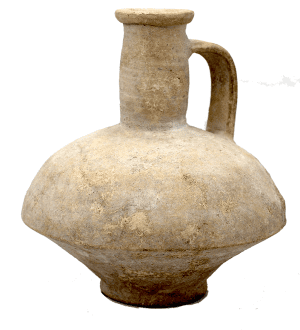
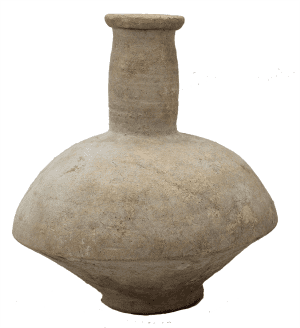
The shape of this elegant carinated ancient earthenware pouring vessel used to hold and dispense potable liquids: water, wine and other drinks. They were used to hydrate everyone including laborers, field workers, ship-rowers, army personnel and people in their homes and were placed wherever they were needed.
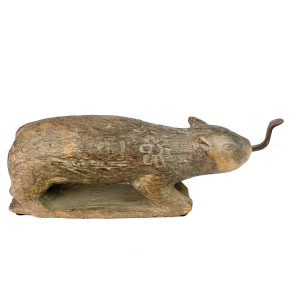
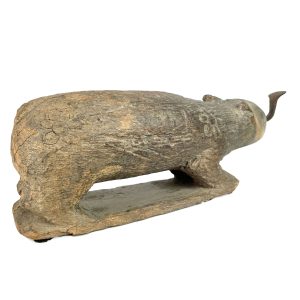
This antique coconut grater is a very practical multi-use creation designed to cut, grate, shave, husk, and shred coconuts and large fruits and vegetables. Some were carved as crouching rabbits and others like this were realistic renderings of small mammals. Its decorative appeal includes lovely 6-petal flowers above its four legs and elegantly curved and metal piece extending ” W:from its mouth. With its warm and rustic feel, it would be a unique decorative addition to any kitchen and an interesting conversational piece.
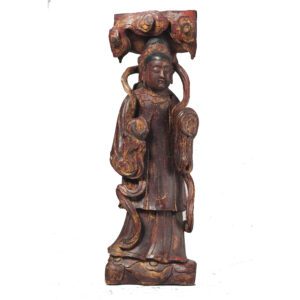
Exquisite carved Taoist Queen Mother of the West Jade Maiden attendant who carries a peach of immortality grown in the Queen’s Garden. These fruits blossom every 3,000 years and are served at her famous banquet in the Western Paradise.
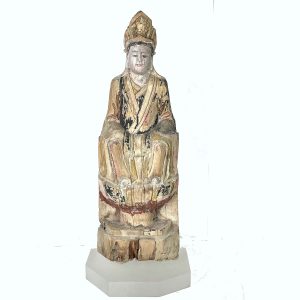

This Guanyin image was probably one of a pair of images along with the Taoist Queen Mother of the West (16206A-WACK) placed together on a community, local temple or home altar. Created by the same local artisan, they are provincial rather than imperial style having a humble, unadorned and simple rendering, seated on backless thrones, hands covered by a ritual cloth, uncharacteristic of Guanyin but common for Taoist goddesses. Both wear layered robes and a high pointed crown – the Queen Mother’s centered by a phoenix and Guanyin’s by a flower surrounded by symbolic aureole of radiating light. Both have soft blissful smiles with eyes cast slightly downwards to engage their devotees. Initially covered in bright polychrome colors, there are traces of surviving red, yellow, green, brown and black.
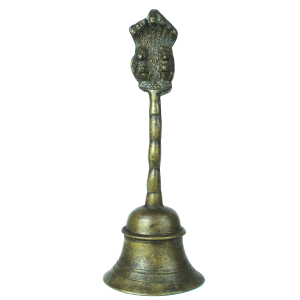
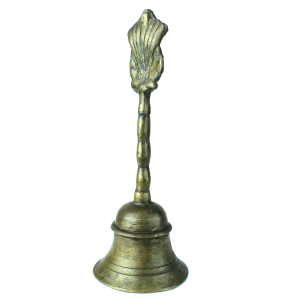
Hindu prayer bell used in a temple or home altar for daily puja rituals. Topped by a pair of Garudas and sheltered by Nagas who are natural enemies, but when represented together symbolize peace and serenity of the prayer bell sounds.
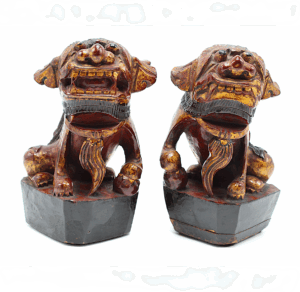
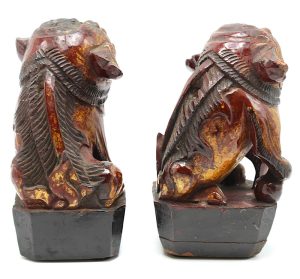
Each of this whimsical gold and red-burgundy lacquered pair of male fu lions sits erect on a high pedestal heads thrown back with flaring ears, bulging eyes, decorative stylized manes and a small bushy tail. Their spirituality is displayed by the pair silently emitting the blessed mantra “aum”: the open mouthed lion forming an “au,” and the other completing it with a closed mouth to form “mmm.” The workmanship on these pieces is masterful, although rustic and provincial, and they are rare with their Buddhist symbolism and because most pairs of fu lions pairs were lost during China’s modernization.
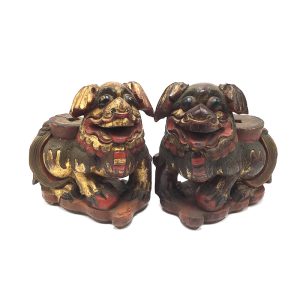
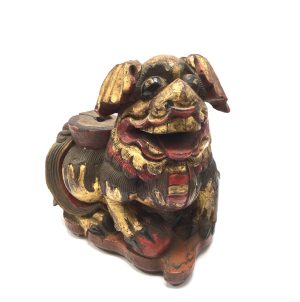
Whimsical carvings of fu lions were the most popular mythical animals in Chinese homes, especially during the Ming and Qing dynasties, as free standing statues, designs on furniture, architectural elements and functional pieces in private homes or gardens or on a home altar to bring fu and the blessings to the home. This incredibly cute…
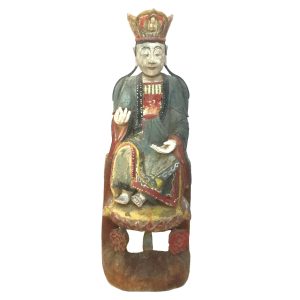
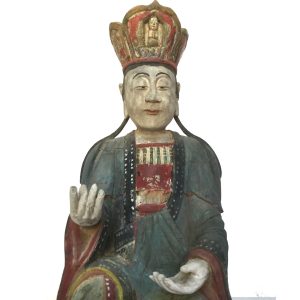
Large provincial Guanyin is natural and modest rather than idealized in relaxed lalitsana pose. Remarkable oversized crown centered with rustic Amitabha on a lotus with pointed aureole. This personalized depiction is a charming, innocent portrayal of a spiritual subject.
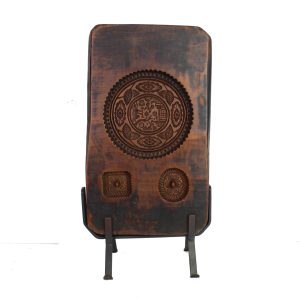

The Mid Autumn Moon Festival, also called the Mooncake Festival, is the 2nd most important holiday after the Chinese New Year, celebrated when the full moon is at its brightest point on the 15th day of the 8th month of the lunar calendar. It is a time for multi-generational gatherings when families dine together in harmony,…
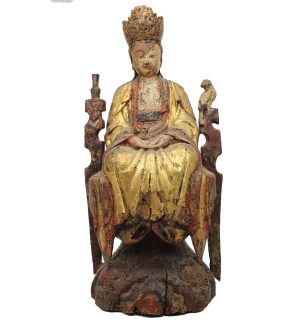
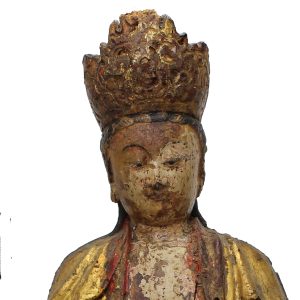
One of the most popular Mahayana Pure Land Buddhism depictions of Guanyin, especially during the Ming and Qing dynasties, is Nanhai Guanyin shown here symbolically on a stylized rocky outcrop at her cave at Putuo in meditation (dhyana), legs in padmasana under her robes, flanked by twisted columns one topped by a vial placed on…
End of content
End of content